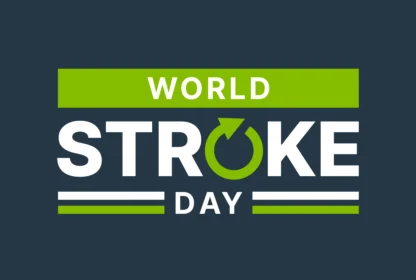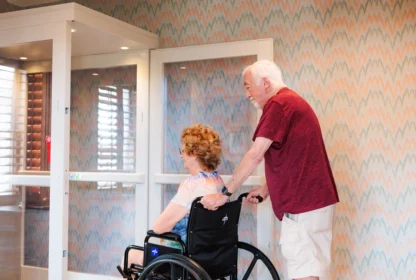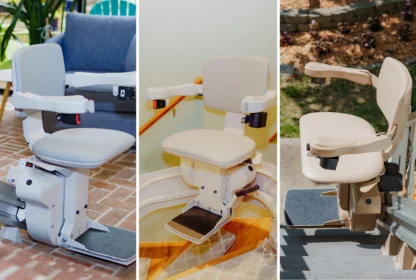
My name is Kelly Mercer and I’m a web developer and graphic designer for 101 Mobility. I was born with a hearing loss. In honor of Deaf History Month (March 13-April 15), I would like to go through some of the inspiring technological advancements that have made it easier for me to communicate.
There have been many advancements in technology that can help people with hearing loss to become more independent. I grew up with assistive technology such as closed captions/subtitles, TDD (Telephone Device for the Deaf), hearing aids/cochlear implant, etc. Now I have a wide variety of techniques to use, such as text messaging, email, instant messenger, social media, webcam, video-phone, smartphones, and Google Glass.
Hearing Aids and Cochlear Implants
Did you know that the electrical hearing aid was invented in 1892? Before that, there was the ear trumpet, a funnel-shaped device that collects sound waves and leads them into the ear. Can you imagine still using the ear trumpets? In the 1970s to 1990s, analog hearing aids entered the market. Since then, technology has improved our hearing abilities with digital hearing aids and cochlear implants. In 1985 the cochlear implant was approved for people age 18 and older. Today children with hearing loss can get cochlear implants as well.
Closed Captions and Subtitles
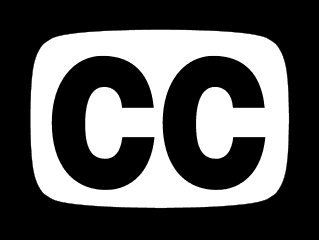 Closed captioning was invented by the Caption Center at WGBH in Boston in 1972. They broadcast the first-ever captioned program, “The French Chef”, on PBS. Twenty-one years later, the FCC requires that all newly manufactured TVs have a decoding chip to allow closed captions. Today we see closed captioning everywhere – – our homes, restaurants, bars, hospitals, doctor’s offices (in the waiting room), and even in movie theaters!
Closed captioning was invented by the Caption Center at WGBH in Boston in 1972. They broadcast the first-ever captioned program, “The French Chef”, on PBS. Twenty-one years later, the FCC requires that all newly manufactured TVs have a decoding chip to allow closed captions. Today we see closed captioning everywhere – – our homes, restaurants, bars, hospitals, doctor’s offices (in the waiting room), and even in movie theaters!
WGBH also invented rear-window captioning for movie theaters which is still in use in some areas. Many theaters provide different types of assistive technology for movie-goers, such as subtitles on the screen and closed-captioning glasses (they look like 3D glasses but with closed captions). There is also a mobile app called CaptionFish which allows users to look up available movie listings with subtitles at nearby theaters.
In addition to closed captioning on TVs and movie screens, you can also view videos online with subtitles provided – they can be found on YouTube, Vimeo, Hulu, and other related sites. Speaking of YouTube and Vimeo, you can program your videos with subtitles by using their captioning tool. Back in 2010, the 21st-Century Communications and Video Accessibility Act (CVAA) was signed into law. It requires that unedited, full-length programs shown on TV with captions must also be captioned when they are made available online. Two years later, Netflix announced that they would offer closed captions on all TV and movie content starting in September 2014.
Telephone Devices for the Deaf (TDD)
Robert Weitbrecht, a deaf scientist, developed a telephone device for the deaf (TDD) in the 1960s. The earliest TDDs were huge metal machines with printer paper coming out of them. Let’s fast-forward to the early 1990s – I remember having a TDD with an acoustic coupler where the telephone handset rested. The acoustic coupler/telephone handset would pick up the sound of a person typing on their QWERTY keyboard. The other person with a TDD would type back their reply. This kind of communication required each user to have a TDD. If someone didn’t have a TDD and could speak/hear well on the phone, then she/he could call the relay operator to contact the person with a text telephone (TDD) to communicate via the phone call.
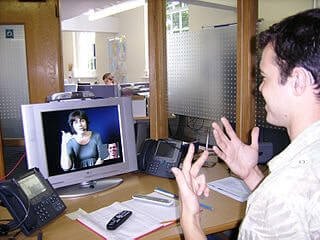 A deaf or hard-of-hearing person at his workplace using a Video Relay Service (VRS) to communicate with a hearing person in London.
A deaf or hard-of-hearing person at his workplace using a Video Relay Service (VRS) to communicate with a hearing person in London.
A deaf or hard-of-hearing person at his workplace using a Video Relay Service (VRS) to communicate with a hearing person in London. Those times have changed! Today, we have a video phone which enables people with hearing loss to see the relay operator on their TV or computer monitor. The relay operator uses sign language to deliver the caller’s message to the hearing-loss user. The person with hearing loss signs their reply back to the operator who then relays the message to the caller via their headphone.
As you can see, we have come a long way with assistive technology!
